By Dylan Clay
For some reason, almost all chicken thigh dry rub recipes repeat the same ingredients – creating a “barbecue” rub for chicken.
While chicken can be a bland meat, I also like to actually taste the meat as apposed to masking it as much as possible with rub.
Rather, I prefer to keep my ingredients super simple – salt, pepper, garlic powder, and onion powder; That’s it.
My issue with lots of “rub recipes” – aside from the fact that most regurgitate each other – is that they borderline assault meat with spice.
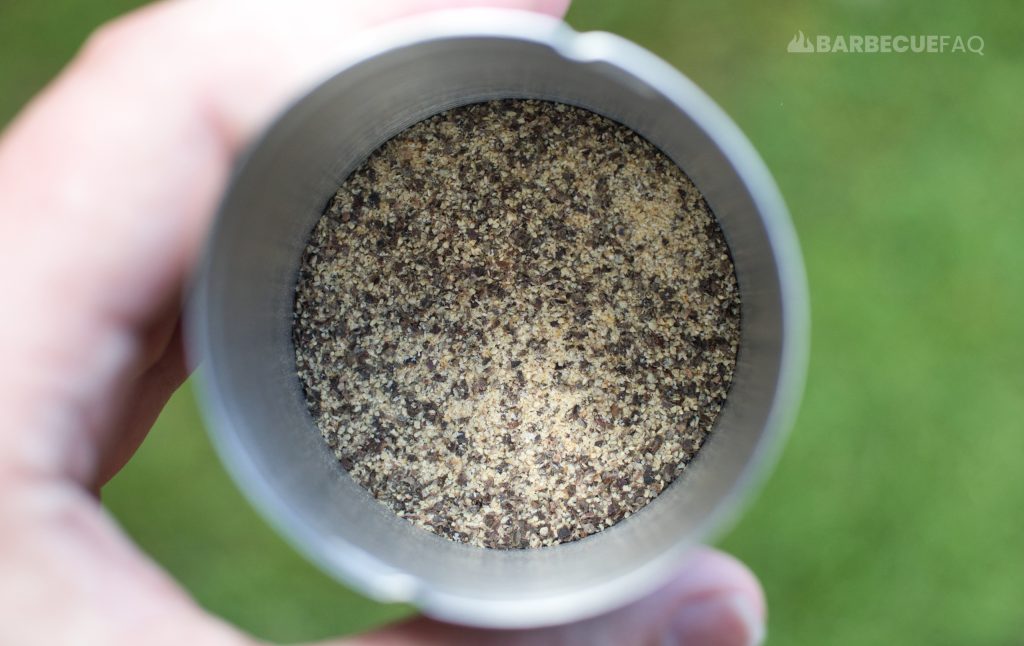
While chicken is somewhat bland, it’s not to the point where the goal should be to taste more rub than you do chicken; Chicken thighs also get added flavor from the rendering of fat and collagen where-as chicken breast don’t.
I prefer to keep things super simple with chicken:
The goal should be to improve the eating experience and below are things I’ve tested over the years to improve chicken as much as possible.
Aside from these, if you’re using bone-in, skin-on thighs, I also like to sprinkle some corn starch on the skin of the thighs as it helps to achieve crispy skin.
I’m also strategic in how I apply some of the above ingredients too – like the salt.
Most dry rub recipes will include “pepper” in the rub – however, they will almost always fail to qualify what “type” of pepper they’re using.
In general, the most common you’ll see cited are:

Mesh size can have a big impact when it comes to creating rubs – like a chicken thigh rub.
The main thing these mesh sizes affect is how “pungent” the pepper is. This is another reason you can’t substitute say equal parts table ground pepper for freshly cracked peppercorns.
The flavor of pepper comes from compounds like:
The more surface area these compounds have, the more readily they’ll evaporate.
Suffice to say – freshly cracked peppercorns have less surface area exposed meaning they’re the most pungent. Where-as table ground black pepper has far more surface area exposed and consequently, it’s far less pungent.
Usually a middle ground between these is 16 mesh black pepper – hence its popularity.
After testing tons of different types of pepper with chicken thighs, it’s also my preference.
Salt is included in most dry rubs simply because it helps to enhance the intrinsic flavor of anything it’s added to – including chicken thighs.

The main things to talk about in terms of salt are:
To start, we’ll mention the brands as this will naturally segway into the “types.”
The two most popular brands of kosher salt are Morton’s and Diamond Crystal.
Most culinary professionals will tell you to use Diamond Crystal because it contains only salt.
Here’s a picture of Diamond Crystal:

Where-as people who don’t really taste a difference – like me – will use Morton’s:

The reason most people don’t like Morton’s is because it contains an anti-caking agent (yellow prussiate of soda, or sodium ferrocyanide), which some believe tastes bitter.
Personally, when it comes to using salt – I always prefer to salt the meat first and then apply the other dry rub ingredients.
This lets you have more control over the salt; This is especially true if you’re using Morton’s because it’s denser than Diamond Crystal.
Their respective densities are as follows:
The densities above are also useful from a recipe perspective because you can adjust your salt accordingly.
Say a recipe said to use 1 Tablespoon of Morton’s Kosher salt and you had Diamond Crystal, you’d simply use double the amount (since the density is half).
If you prefer to mix your dry rub ingredients together, I’d suggest using Diamond Crystal because it won’t dissociate from the other ingredients as easily.
Where-as with Morton’s you’ll likely have to mix the bottle several times so the salt is evenly dispersed.
For this recipe specifically, I used Diamond Crystal because that’s what I had on hand.
I wouldn’t recommend it.
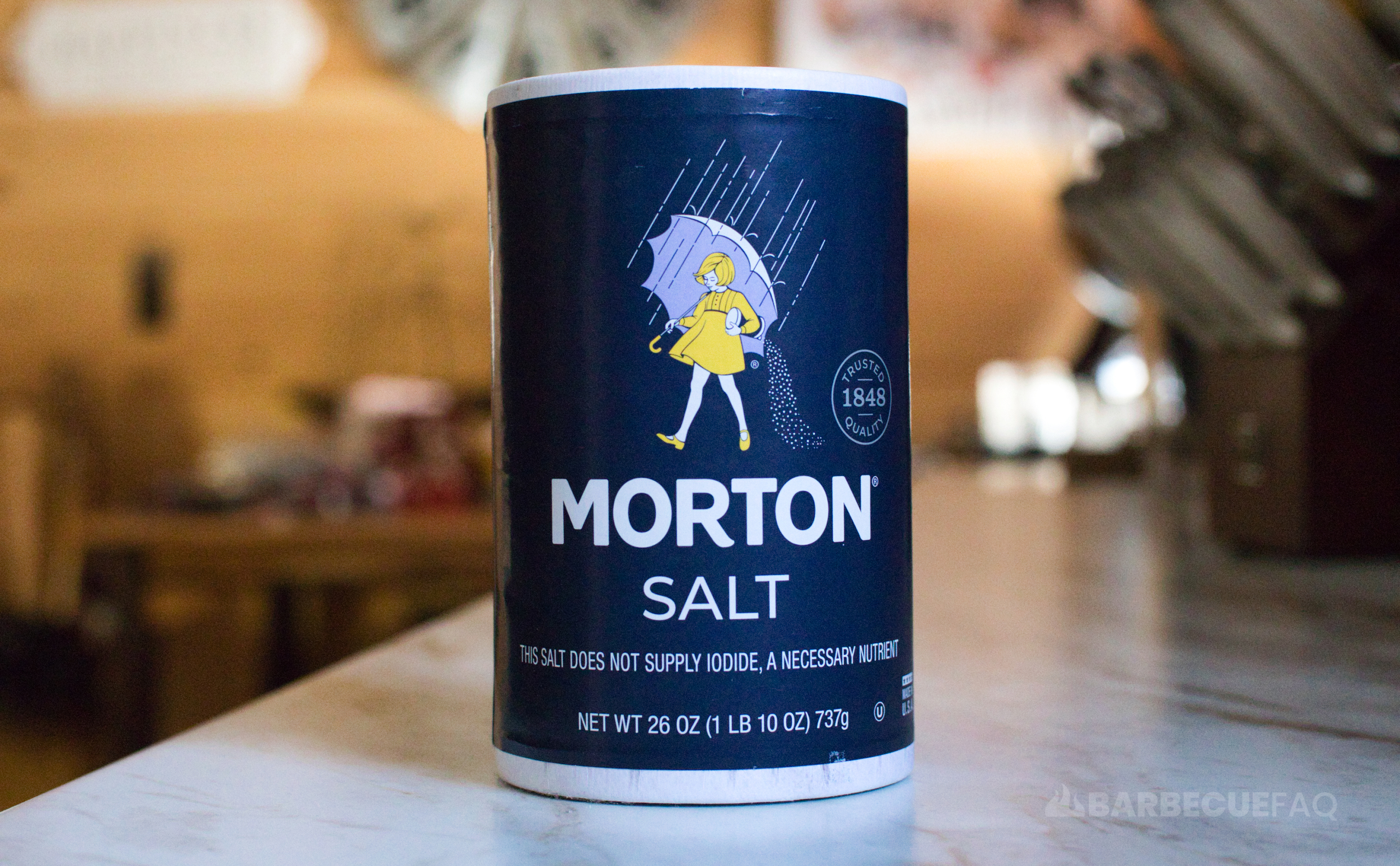
This is primarily due to the fact that table salt is quite dense, even more dense than Morton’s kosher salt.
Here’s the density of table salt:
Table salt also has a much smaller granule size. Where-as kosher salt has a coarse grain. Meaning, you can quickly over-salt portions of the chicken thigh simply due to the granule size.
The easiest way to compare table salt and kosher salt is that table salt makes food taste salty where-as kosher salt improves the flavor of the food.
There’s also the concept of iodized vs non-iodized salt; Some table salt is iodized which can leave a bitter aftertaste; Kosher salt is also non-iodized.
With chicken thighs where they’re sold skin-on, my goal is to get that skin as crispy/crunchy as I possibly can.
To achieve this, we can use the kosher salt strategically.
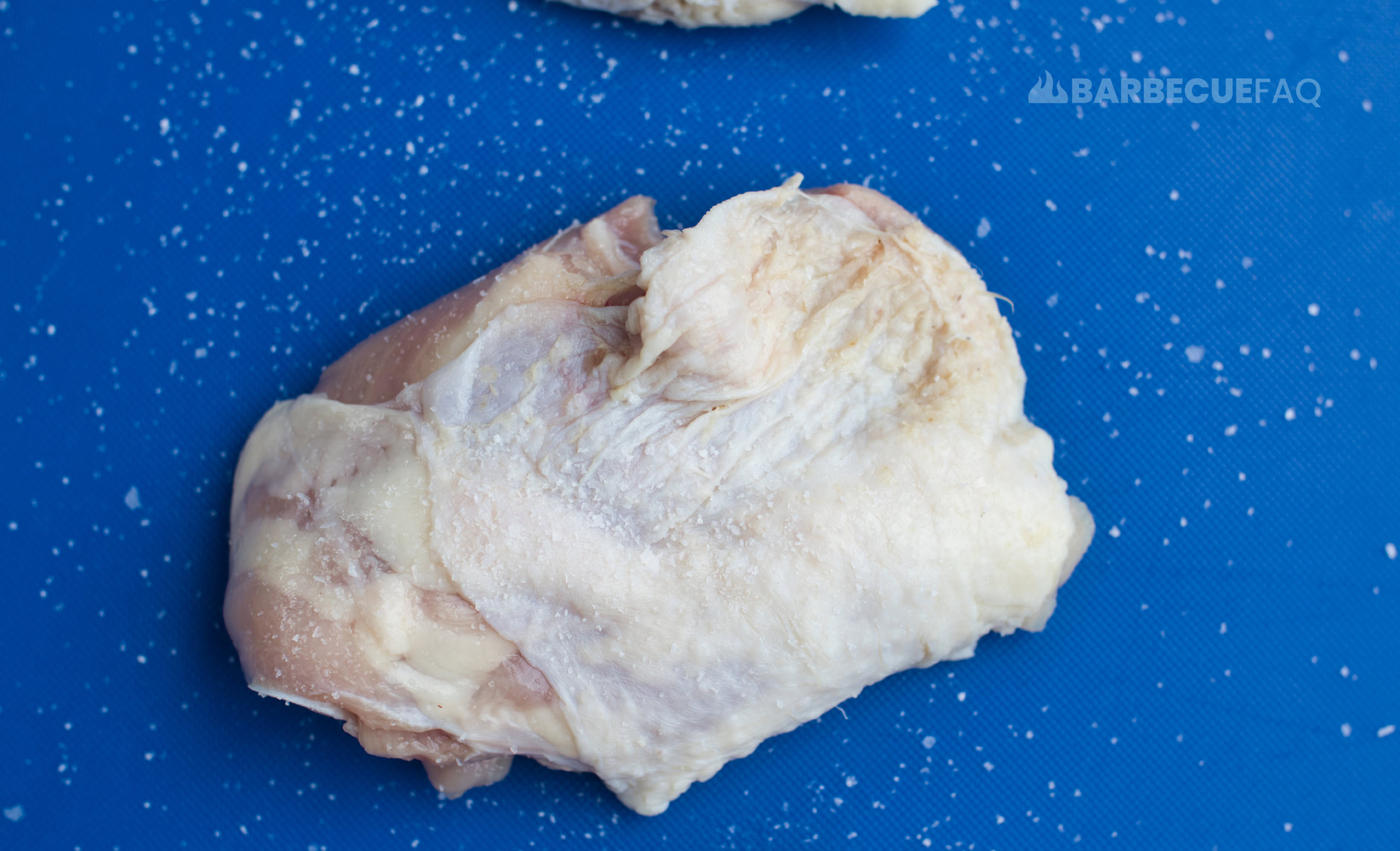
In my article on how to get crispy chicken skin, I used a number of techniques:
So rather than combining the salt in your dry rub, apply it a day in advance. You’ll further enhance the meat via the dry brine and the salt works to dry out the skin.
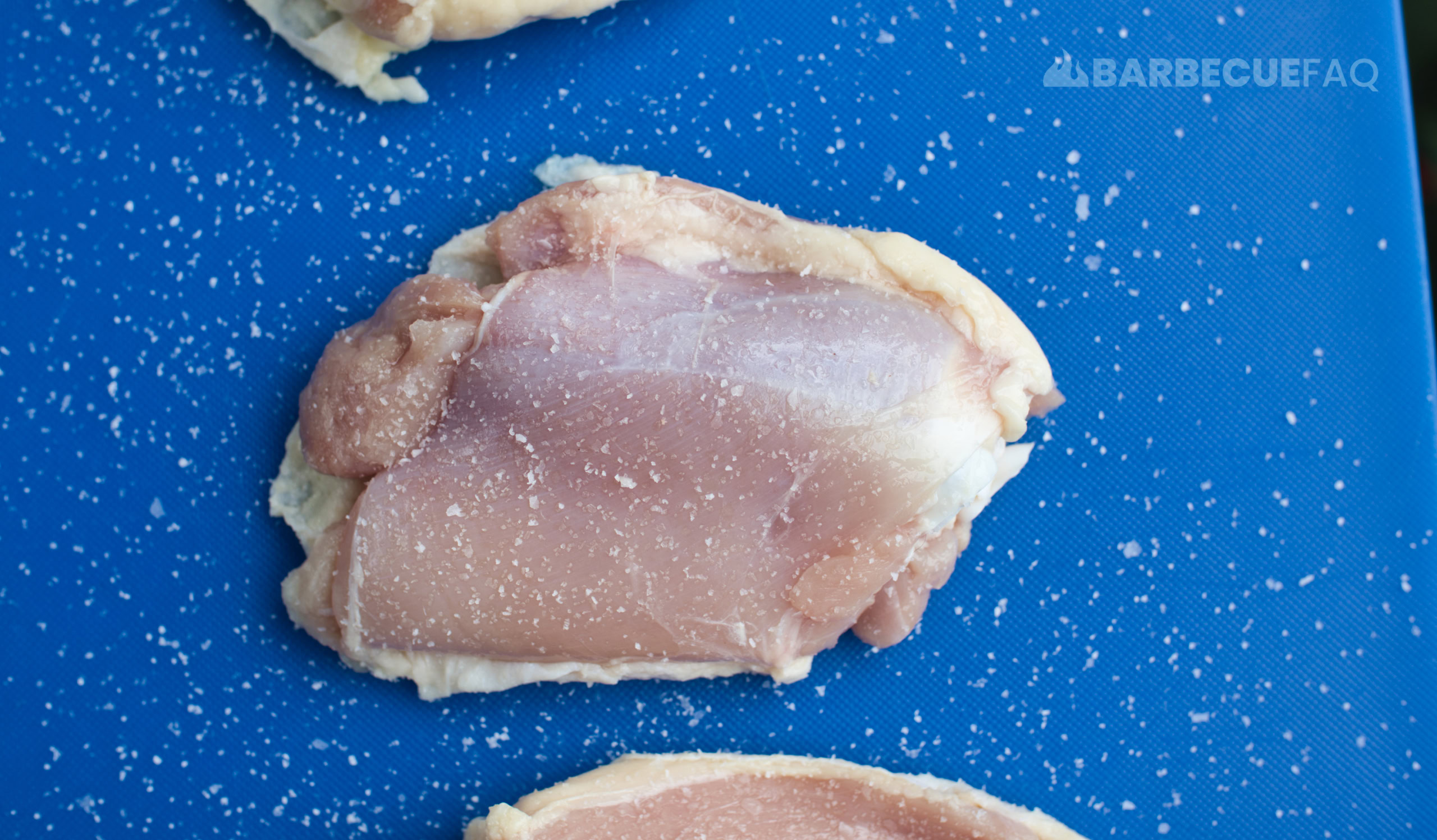
This is concept is in a similar vein to when you go swimming in the ocean. After doing so, your skin feels dry due to the salt in the water.
After 24 hours or whenever it’s time to cook your chicken thighs, you can then apply your other ingredients.
While just salt and pepper (used strategically) can create awesome chicken thighs, I know that food is always better when either garlic powder or onion powder are added to them.
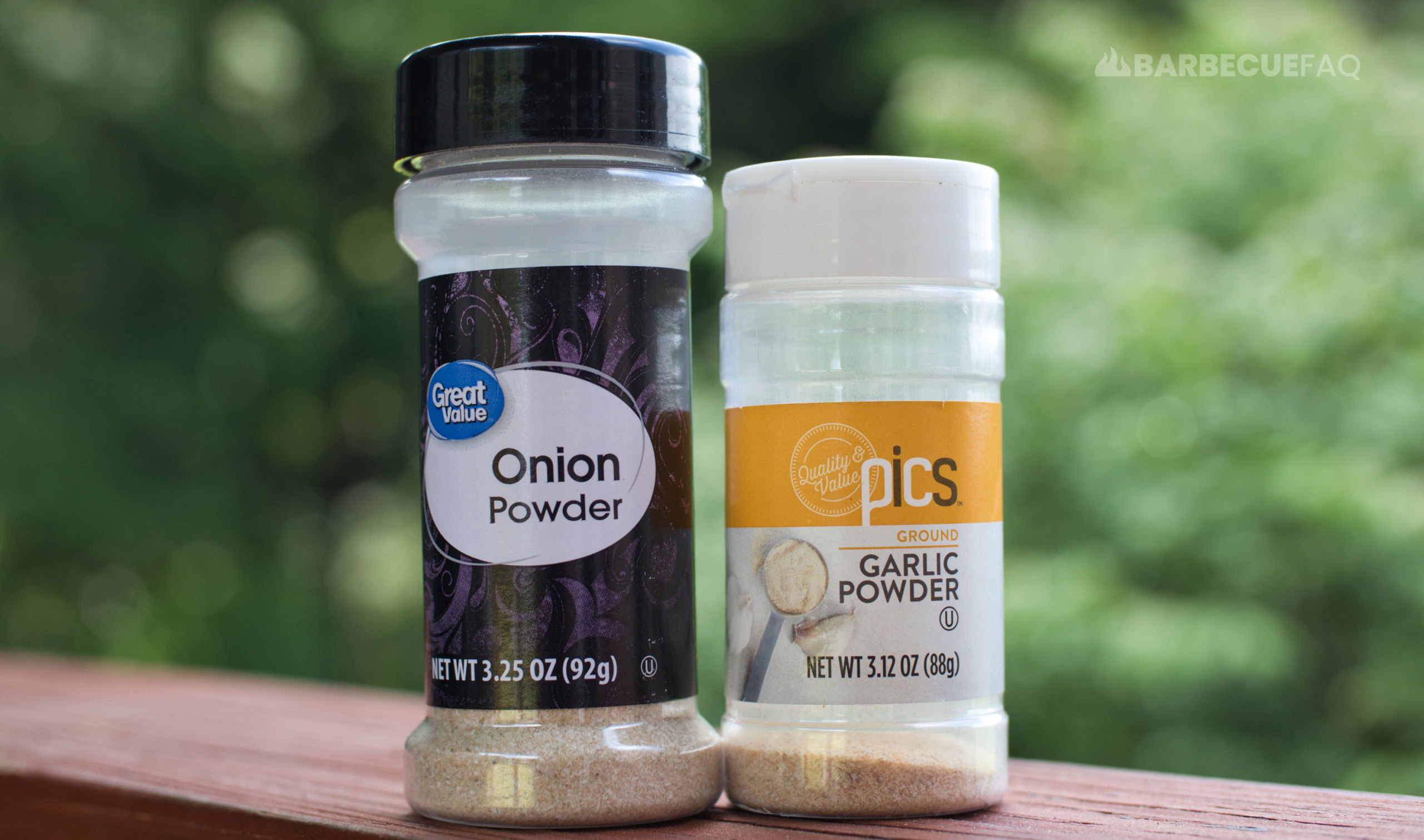
Both garlic and onion powder are considered “umami” ingredients as both contain the amino acid glutamate; Umami is essentially the taste of glutamate.
Meaning, both of these ingredients have the ability to enhance pretty much any dish they’re added too – including chicken thighs.
You also don’t need to use a ton to make a difference.
In a lot of fried chicken recipes you’ll see these ingredients used in modest amounts (because they work).
I’ve written two articles where I discuss achieving crispy skin on whole chicken and on chicken wings.
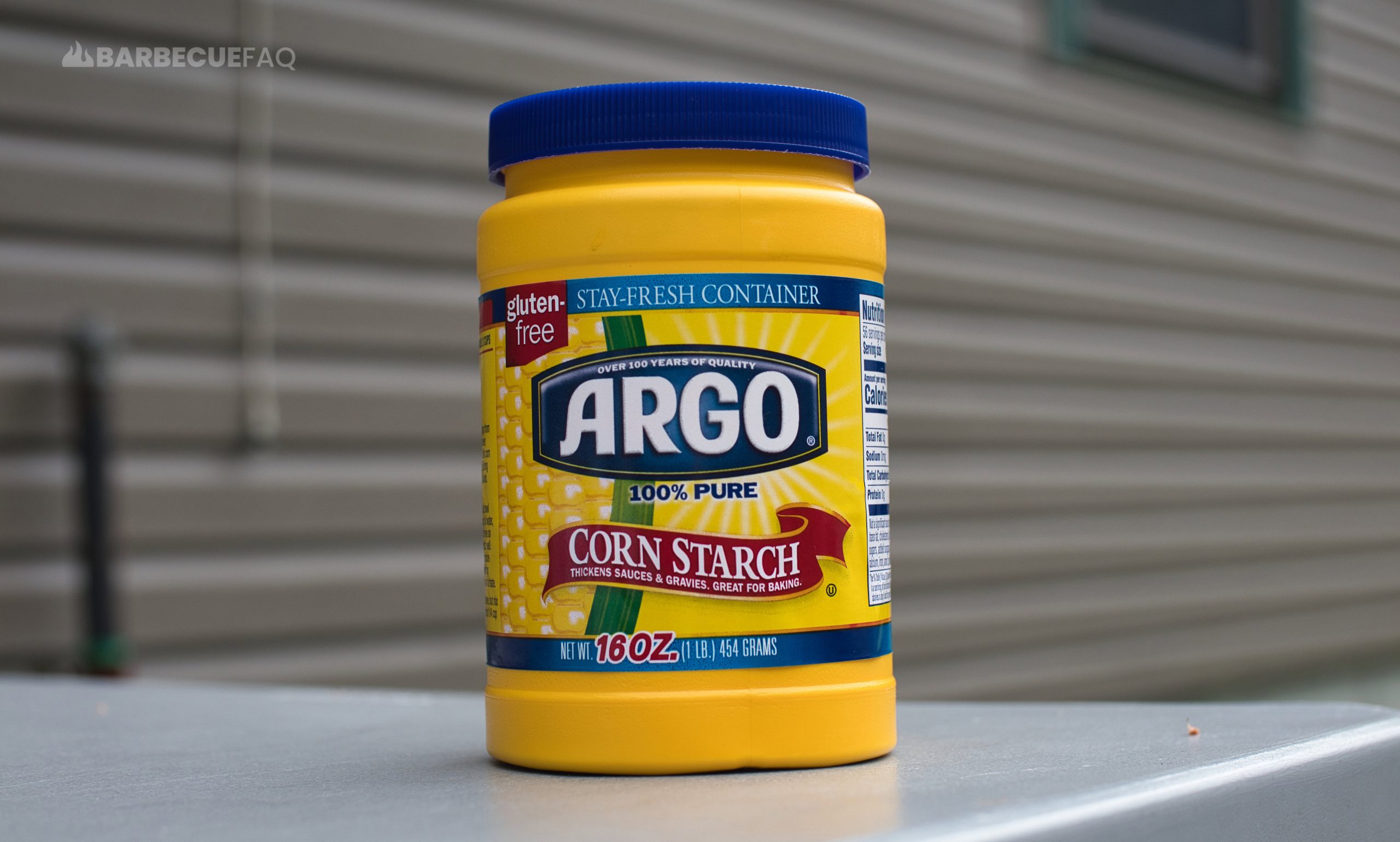
In the wing article I looked at both corn starch and baking powder. I found baking powder to be sandy and gritty and lacking in terms of the “crunch.”
Where-as corn starch offered the glass-like crunch I’m always chasing (especially on the grill).
Then in my article on crispy chicken skin I used a whole bird and put corn starch on half of it. The half with the corn starch had the crunchy skin only on the thighs and drums – where-as on the breast it was almost paste like.
What I can take away from the above is that corn starch works well with cuts of meat like wings or thighs where you’re rendering tons of collagen and fat and you’re pushing out lots of moisture (simply due to the moisture from the breast).
For this reason, if you’re using skin-on chicken thighs, I’d recommend using some corn starch in your rub or applying it separately to the skin.
In order to get certain ingredients to stick – especially if you opt to dry brine and air dry overnight – I’d recommend using a cooking oil, like EVOO, as a binder.
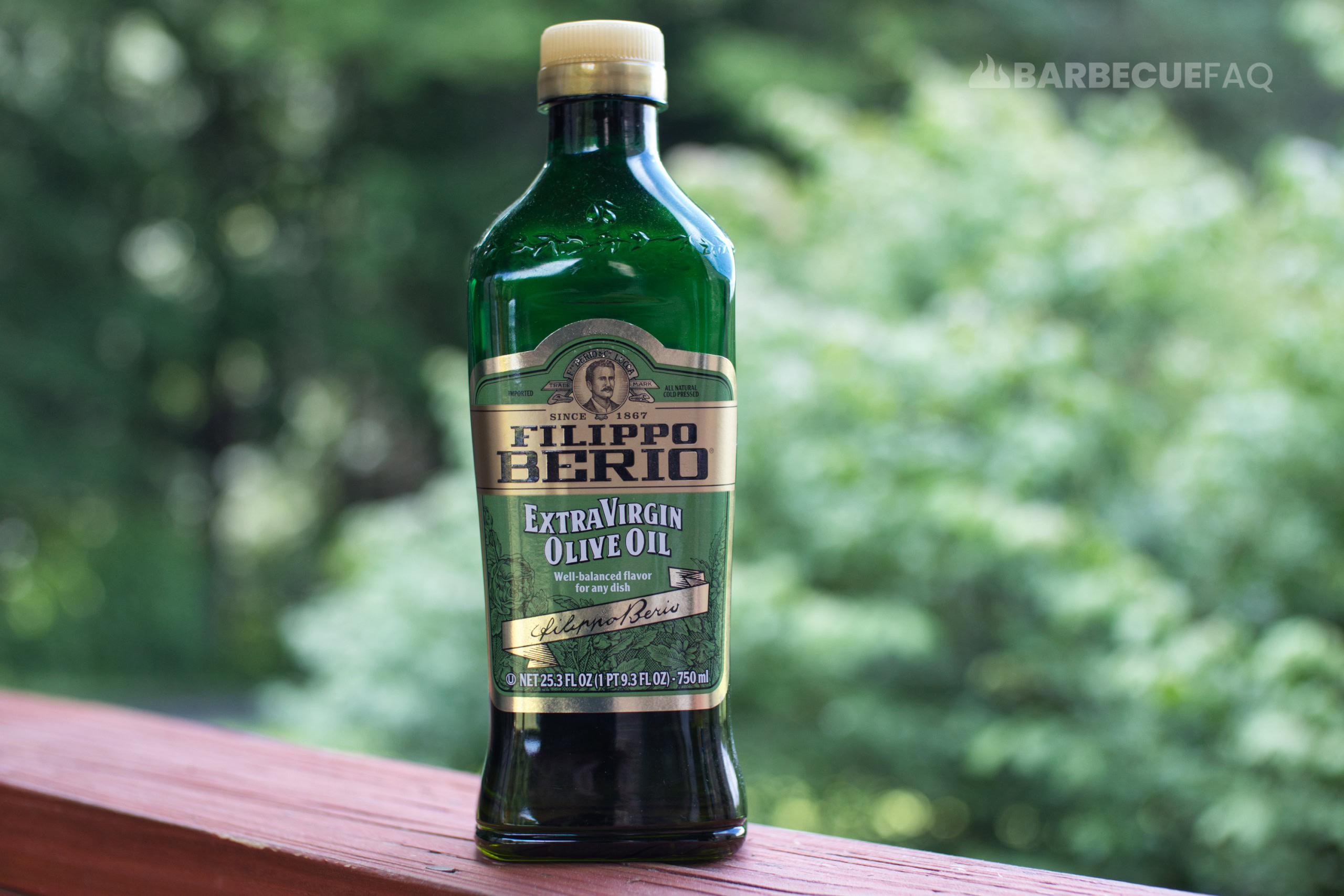
Of the ingredients above, the one that is apt to fall off the most is the 16 mesh black pepper.
The oil will also offer a couple of benefits:
So to combine all of this information. I’d suggest buying bone-in, skin-on chicken thighs – simply because they taste better.
I’d recommend pat drying the chicken thighs completely.
I’d then salt both sides with either Morton’s or Diamond Crystal kosher salt. Salting both the meat and the skin side.
I’d then place these chicken thighs on a wire rack and in the refrigerator overnight to dry brine and air dry.
The next day – when it’s time to cook the chicken thighs – I’d combine in a shaker bottle:
Before shaking these ingredients onto my chicken thighs, I’d apply a thin layer of Extra Virgin Olive Oil to the surface of the thighs to act as my binder.
I’d then apply my dry rub to the thighs – cover all parts, both the skin side and meat side.
I’d then apply a small amount of corn starch to the skin-side of the chicken thighs.
You can then put these on the grill/smoker/in the oven – finishing at a around ~190-200F internal.

Simple and easy. Thanks!
Happy to help!